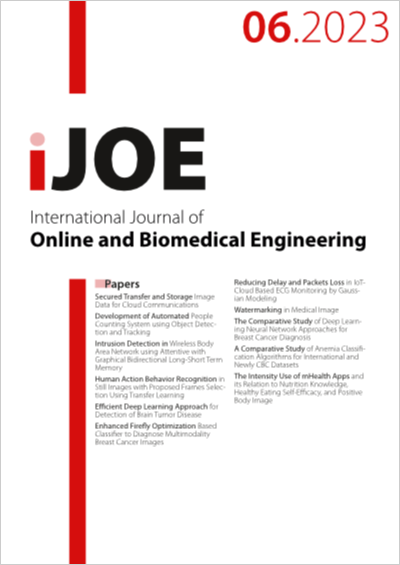Secured Transfer and Storage Image Data for Cloud Communications
DOI:
https://doi.org/10.3991/ijoe.v19i06.37587Keywords:
Cloud Storage, Image Encryption, Chaotic Map, Key Management.Abstract
In cloud computing, resources are used to communicate instead of local servers or individual devices. However, sharing resources among several users is a difficult issue in cloud communication. Cryptography and steganography techniques are used for cloud storage to address data security challenges. This paper presents a novel method for securely encrypting image data for transmission and link exchange with a cloud storage service. There are two phases to accomplish the encryption process, the first phase encrypts the image file by XORing it with a random key that is generated by a new hybrid of the chaotic map. The second phase converts the encrypted image format to audio format to add another layer of security and improve secure image data transfer. The random key is generated using a hybrid chaotic map and has the benefit of having more than 10256 key spaces and the necessary level of security. Based on a statistical analysis of the encryption, the quality of the image is evaluated using several criteria, and the results demonstrate the algorithm's ability to accomplish resist encryption
Downloads
Published
How to Cite
Issue
Section
License
Copyright (c) 2023 Haider TH.Salim ALRikabi, Mohammad K. Abdul-Hussein

This work is licensed under a Creative Commons Attribution 4.0 International License.



